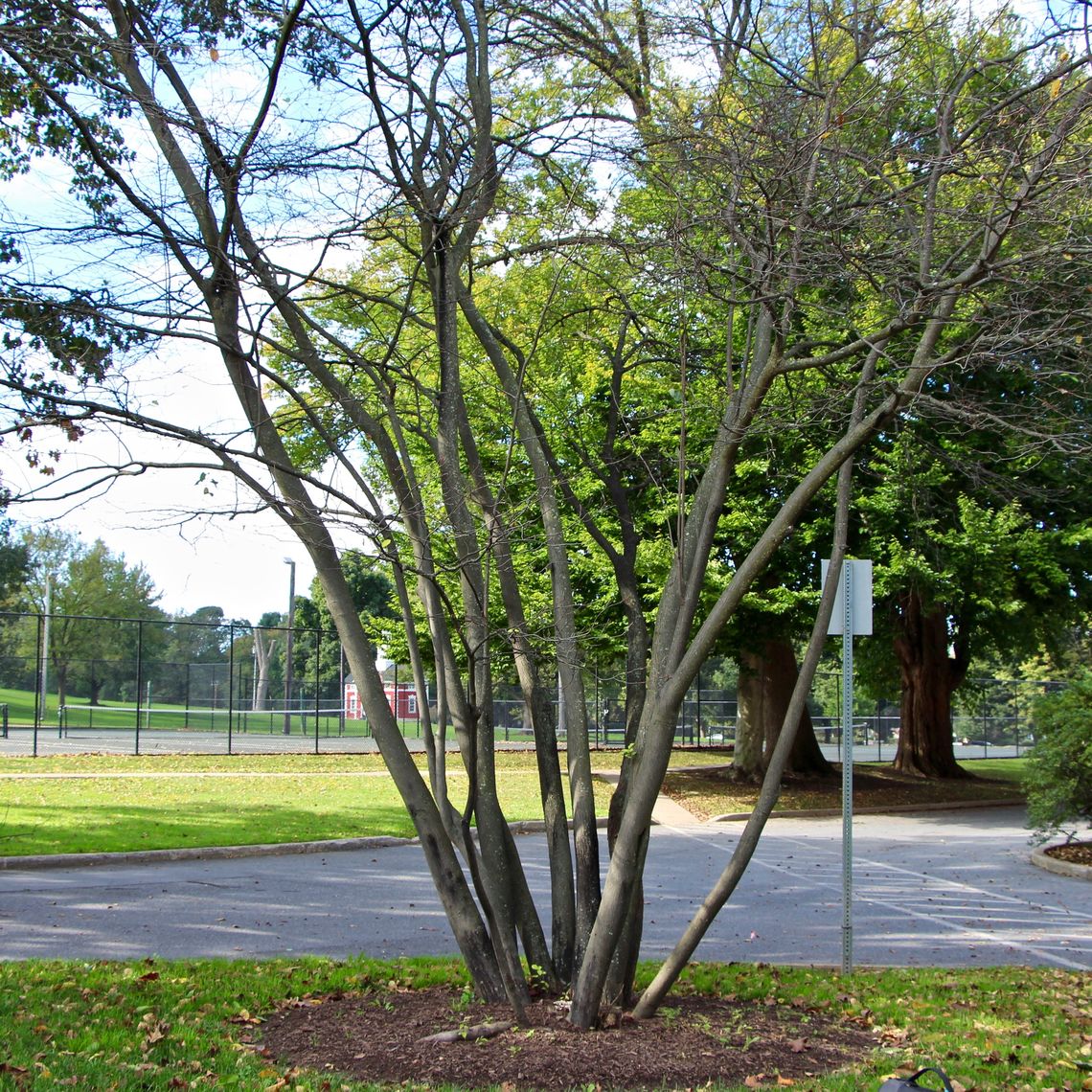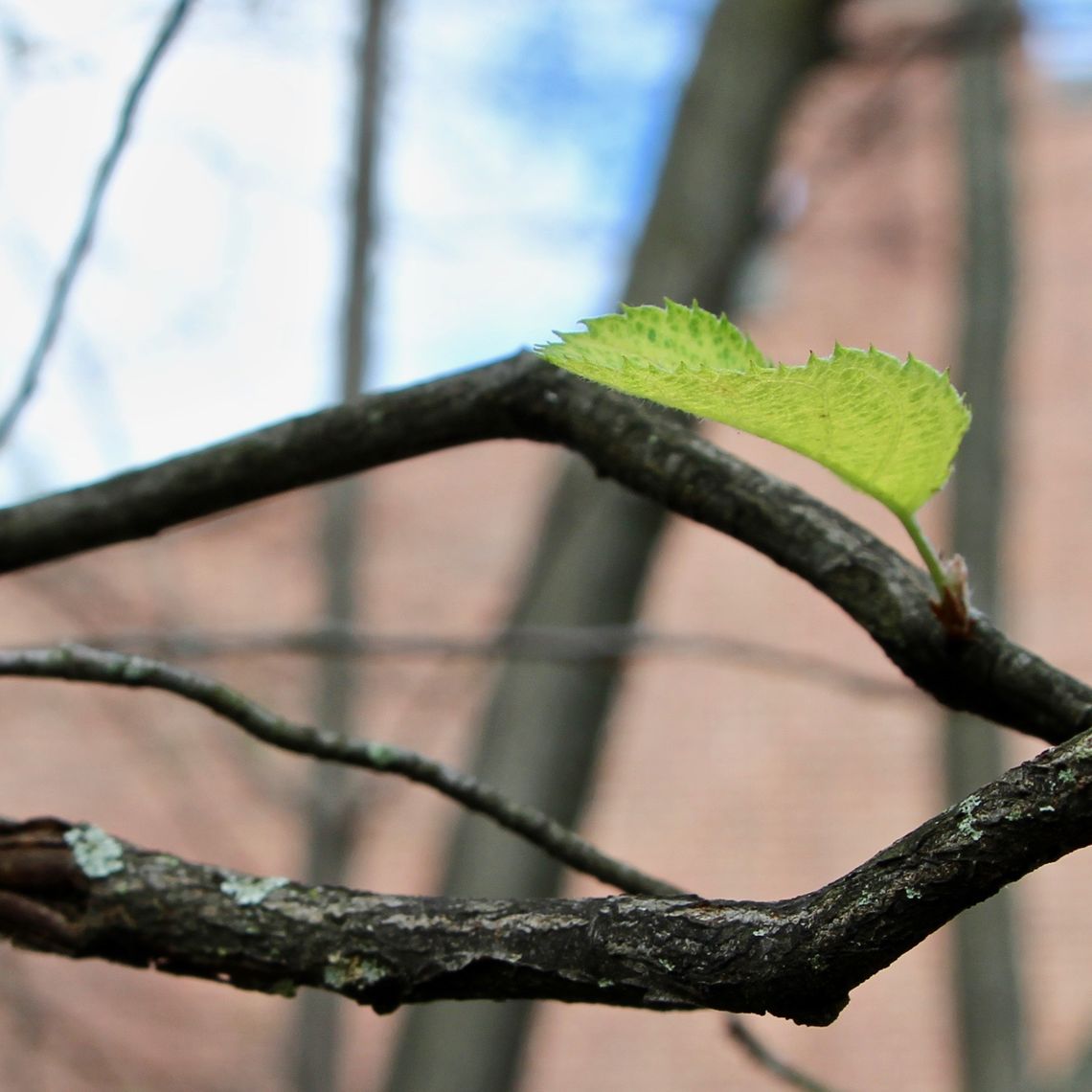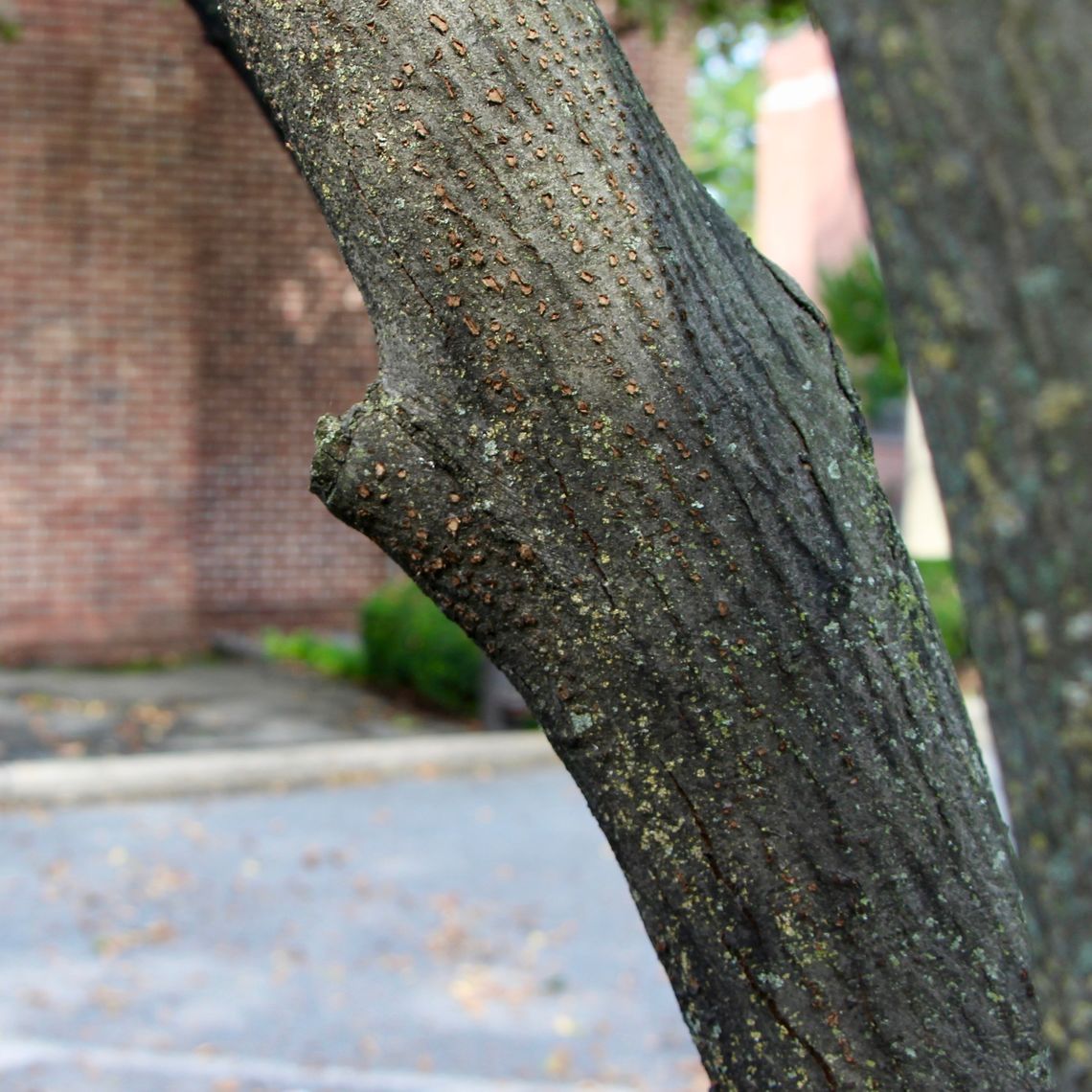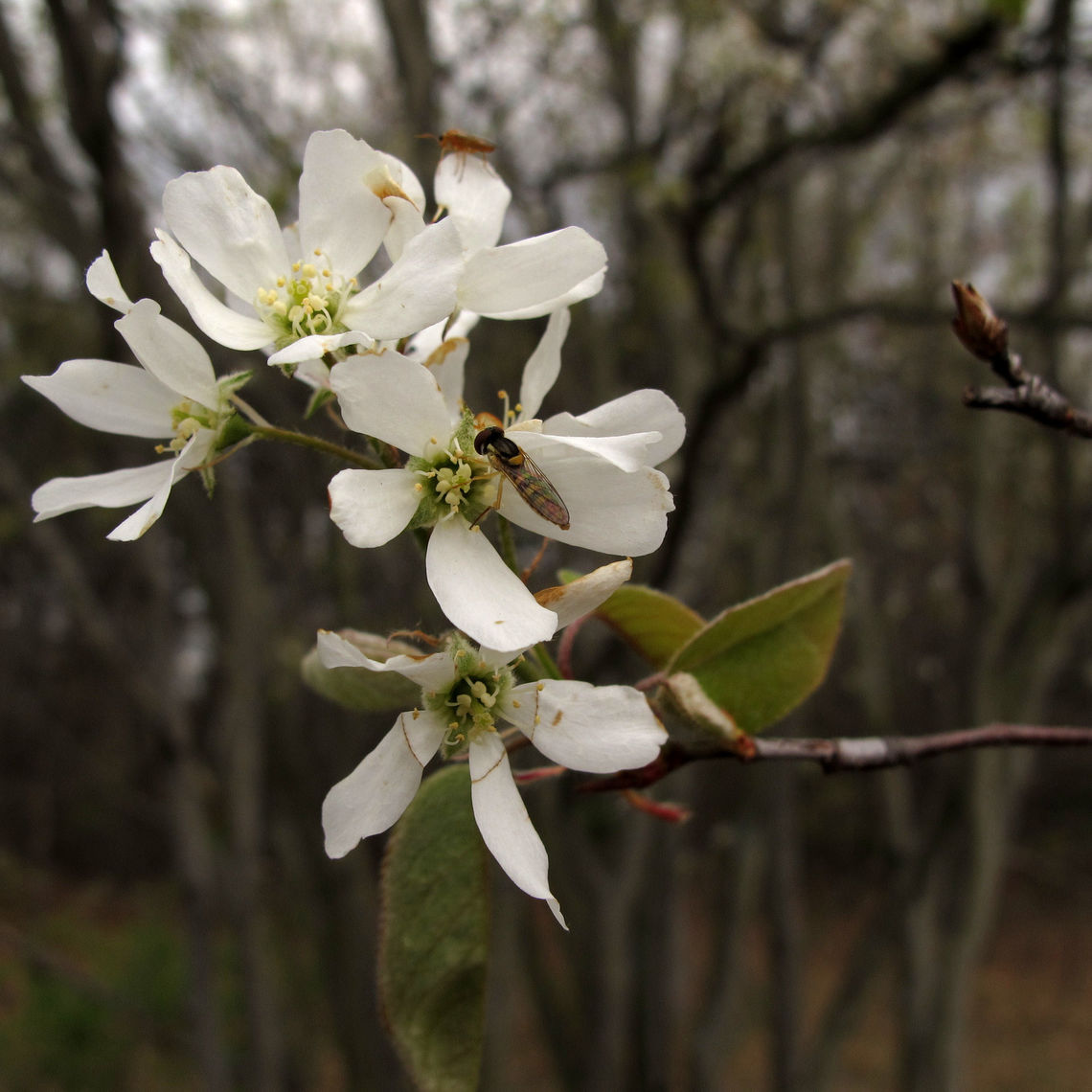Downy Serviceberry (Amelanchier arborea)
The downy serviceberry grows as a small tree or a large shrub. It can be found in the wild along streams or on rocky slopes, but also makes a great residential or park tree. This tree is noted for its fragrant, 5-petaled, white flowers, that grow in drooping clusters. Its leaves are rich green, slightly toothed, and egg-shaped with a narrow end at the base. The berries from this tree are sweet and can be used to make jams and pies. This tree attracts birds and small mammals.
Also know as: Juneberry, Shadebush
Family: Rosaceae (Rose)
Characteristics: New leaves are covered with small hairs. When leaves mature, they turn rich green and are 1-3 inches long, obovate, and slightly toothed. In October, leaf color changes to yellow, orange, or a dusty red. In April, slightly before the leaves, 5-petaled white flowers appear in drooping, 2-inch to 4-inch-long racemes (clusters of flowers where each flower is attached to its own stalk). In June, this tree begins to produce green berries, which turn purple-black and are edible when mature. Bark is smooth, gray, and streaked. This tree grows as a large shrub or a small tree. It usually grows 15-25 feet high, but can reach up to 40 feet in the wild.
Foliage: Deciduous (leaves lost seasonally)
Geographic Origin: Eastern North America (native)
Cultivation Notes: Requires low maintenance. Does best in full sun to part shade. Prefers acidic, moist, and well-drained soils, though is tolerant of a wide range of soil types. Root suckers are common, and if not removed, the plant will grow as a shrub.
Number on Campus: 2
Sources: Dirr, Morton Arboretum, Missouri Botanical Garden




